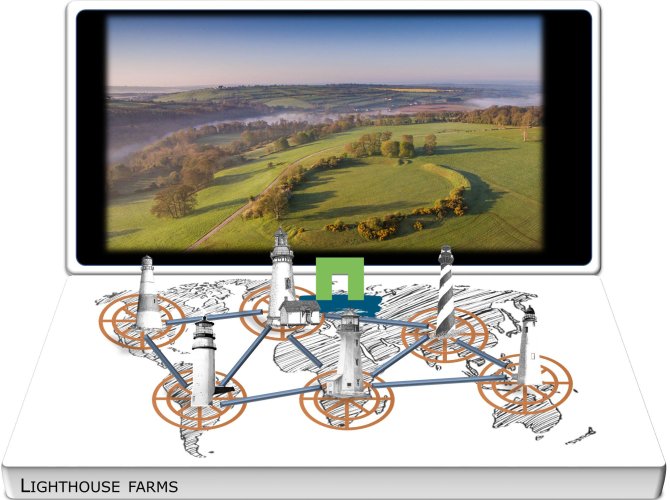
News
Royal couple visits WUR Lighthouse farm in Ireland via hologram
Hyper progressive agricultural companies that wish to produce food in a sustainable manner: Wageningen University & Research is working on a network of Lighthouse farms that are to serve as a classroom and laboratory for the development of sustainable food systems. During their state visit to Ireland, King Willem Alexander and Queen Máxima will be having a look at one of these farms via a hologram on Thursday 13 June.
At the National Botanic Gardens of Ireland, the greenest place in all of Dublin, the royal couple will feel like they are visiting the historical Irish Lands of Dowth, a UNESCO World Heritage Site. That is where Devenish Nutrition is developing an agricultural system for the production of healthy beef, from soil to grass to animal. They are restoring some of the natural landscape like groves and wooded banks to make the system climate neutral and to allow enough space for both cattle and wild animals. “Via the hologram, we will temporarily be looking towards the future: what systems will we need in 2050 in order to produce enough food within the boundaries of our planet,” says Professor of Farming Systems Ecology Rogier Schulte. “Devenish Nutrition has already made the jump to 2050. The company is working towards a means of producing healthy meat that is climate neutral. Since there is no time to visit the premises itself, we will be taking the king there virtually.”
Mosaic of agricultural systems
Wageningen University and Research is working on a mosaic of optimised systems like this one. Schulte: “The big challenge is transforming global agricultural systems in such a way that they will be contributing to food security in a way that makes efficient use of their resources. These systems must be stable and resilient, without being a strain on the environment. This means finding individual solutions for individual farms and regions; solutions that take differences in culture, climate and locale into account.”

Hologram
The Lighthouse farms allow farmers, researchers, stakeholders and students to improve the sustainable agriculture that is dependent on optimal usage of the available biomass. These test locations are also a source of inspiration and new knowledge. “We use augmented reality, for example. With a hologram, several parties from various locations can work together to divide a piece of land in order to create agriculture that is as sustainable as possible. By entering the details of your company, you can see the effect you will have on the climate, income and quality of the soil,” says Rogier Schulte. “Complicated matters become more accessible. This allows an even greater discussion about our priorities. And another advantage: this technology easily fits in your backpack.”
Lighthouse network
Before the end of the year, twelve companies will be part of the Lighthouse network. The Lighthouse farms are currently located in countries like Indonesia, Ireland, Finland and Brazil. Researchers want to add a company from the Netherlands to this. “We will be making an educated choice from amongst the wonderful initiatives that are already present in the Netherlands.”
Facts
- The European Commission has made 1.4 million euros available to the research joint project of WUR, Devenish Nutrition and University College Dublin. This sum is intended for the hiring of five young researchers, to continue the work on the healthy farm, healthy people, healthy planet theme.
- On 11 December 2019 Wageningen University & Research will be hosting a workshop, where all connected Lighthouse farms will explain what their work entails.
- Currently, the Lighthouse farm network consists of seven companies. This number will have grown to twelve before the year is out.